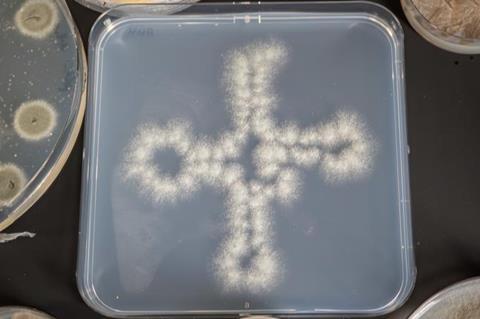Ribonucleic acid, or RNA for short, occurs in all living organisms and regulates the storage, transmission and utilization of genetic information, including the production of proteins. A distinction is made between different types of RNA with different functions. For example, tRNA (transfer RNA) is an adapter molecule that deciphers the genetic code on mRNA (messenger RNA) into a functional product (protein) on the ribosome.

RNA research is currently experiencing a small revolution, as numerous control functions of RNA molecules - including those between different organisms - are not yet well known.
All chemical changes to RNA in the cell together form the epitranscriptome, which often serve like a dimmer switch to adjust gene expression. During gene expression, the cell reads the building instructions for a protein from the DNA sequence of a gene and implements them. This enables the cell to function and react to its environment.
This fundamental knowledge of how RNA works helped the researchers to find a precise starting point for studying the role of modifications in fungal biology.
A mechanism for temporary fungal resistance?
In the study published the journal Nucleic Acids Research, the research team first examined the enzyme Mod5 in the fungus Aspergillus fumigatus. It plays an important role in the modification of tRNA. These chemical changes to the tRNA help the cell to correctly produce proteins that are important for its function. “In a first step, we removed the Mod5 enzyme from the fungus,” reports Alexander Bruch, one of the authors. “As a result, the fungus reacted negatively to stress and switched on a protective system called cross-pathway control at an early stage.”
“Normally, this system is activated when the cell is under stress, for example during starvation or the administration of medication,” adds his colleague Valentina Lazarova. Bruch explains further: “With the protein NmeA, we discovered a new component that is stimulated by this protective system. It helps the fungus to transport harmful substances out of the cell. In this case, allowing the fungus to survive the antifungal agent fluorocytosine.”
READ MORE: Exeter launches second round of global funding to tackle antifungal drug resistance
READ MORE: Breakthrough research identifies mechanism behind drug resistance in malaria parasite
“We were able to show that proteins such as NmeA help the fungus to evade drug treatment and offer an option to become temporarily resistant to antifungal drugs,” says Matthew Blango. “Our findings could be used for better treatment strategies against fungal infections. However, we are only at the beginning of research in this area.”
The study is part of the Jena Cluster of Excellence “Balance of the Microverse”, which researches the regulation and balance of microbial communities, and was funded by the German Research Foundation. Dr. Matthew Blango’s junior research group is funded by the Federal Ministry of Education and Research as part of the “Junior Research Groups in Infection Research” program.
Topics
- Alexander Bruch
- antifungal immunity
- Antimicrobial Resistance
- Antimicrobials
- Aspergillus fumigatus
- Federal Ministry of Education and Research
- Fungi
- German Research Foundation
- Junior Research Groups in Infection Research
- Matthew Blango
- Microbial Genetics
- Mod5 enzyme
- NmeA protein
- One Health
- Research News
- transfer Ribonucleic acid modification.
- UK & Rest of Europe
- Valentina Lazarova







No comments yet